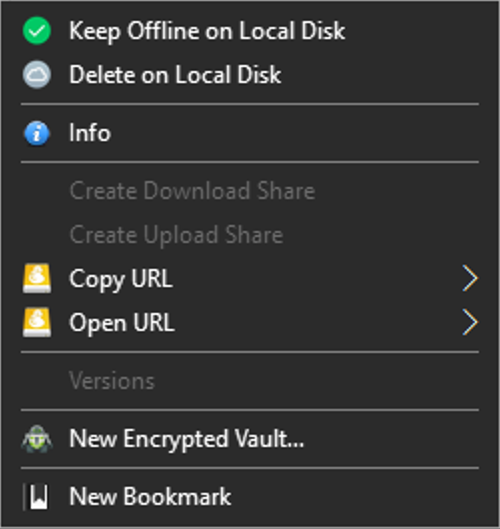

- #Mountain duck sync folders how to#
- #Mountain duck sync folders install#
- #Mountain duck sync folders Pc#
- #Mountain duck sync folders free#
- #Mountain duck sync folders mac#
WebDAV shares just like any other remote filesystem.
#Mountain duck sync folders install#
Install the davfs2 WebDAV filesystem driver, which allows you to mount
#Mountain duck sync folders how to#
The following example shows how to create a personal mount and have it mountedĪutomatically every time you log in to your Linux computer. Prefer to access Nextcloud the same way as any other remote filesystem mount. You can create WebDAV mounts from the Linux command line. (Optional) Provide any special settings or an SSL certificate in the “Port &Ĭreating WebDAV mounts on the Linux command line (Optional) Check the “Create icon” checkbox for a bookmark to appear in the Server: the Nextcloud domain name, for example, (withoutįolder – Enter the path nextcloud/remote.php/dav/files/USERNAME/. User: the Nextcloud username you used to log in, for example, admin. Name: the name you want to see in the Places bookmark, for example, Nextcloud. The resulting dialog should appear with WebDAV already selected. Open Dolphin and click “Network” in the left-hand “Places” column.Ĭlick on the icon labeled Add a Network Folder. You can create a permanent link to your Nextcloud server: Protocol to connect the Nautilus file manager to your Nextcloud You can also mount your Nextcloud files manually. When you configure your Nextcloud account in the GNOME Control Center, your files will automatically be mountedīy Nautilus as a WebDAV share, unless you deselect file access. You can access files in Linux operating systems using the following methods. Windows in the same way as any remote network share, and stay synchronized. With WebDAV, you can access your Nextcloud shares on Linux, macOS and (HTTP) extension that makes it easy to create, read, and edit files on Web Webĭistributed Authoring and Versioning (WebDAV) is a Hypertext Transfer Protocol Using the WebDAV protocol rather than using a special client application.
#Mountain duck sync folders Pc#
If you prefer, you may also connect your desktop PC to your Nextcloud server by php / dav / files / USERNAME / WebDAV configuration
#Mountain duck sync folders mac#
Strongsync, an application developed by ExpanDrive, is the first application on the Mac to support this interface.Example. With Apple deprecating Kernel Extensions, and making loading them much more onerous on Apple Silicon the path forward for accessing remote content in native local apps on the mac is the File Provider interface. MacOS File Provider based SSHFS Strongsync - a macOS File Provider supporting SFTP Cloudmounter is a similar solution but more squarely designed at Mac. Mountain Duck is based on CyberDuck, a popular java-based file transfer client. CloudMounter and Mountain Duck are two popular examples of this type of solution. This NFS server translates the NFS commands into SFTP commands, so you can have an appearance of a local filesystem. One caveat is that like many solutions, it relies on a kernel extension which has been deprecated by macOS and requires a reboot into recovery mode to reduce security level on newer Apple Silicon based macs.Īnother style of implementing SSHFS is implementing a local NFS server that the operating system connects to.
#Mountain duck sync folders free#
If you're looking for a free or open-source option, this is a good place to start. It is a relatively straightforward no-frills command-line appliation without any user interface, but it is well tested and used by many. The go-to opensource option is the port of SSHFS from Linux by macFUSE. The changes you make are immediately and securely synced out to the server over the SSH channel and you don't have to think twice after you hit the save button. Practically speaking that means you can copy and paste file from local to remote from within Finder, or edit files directly on the server using whatever tools you normally use like VS Code, Photoshop, even Microsoft office. Thankfully, there is a better way to interact with files on your server and that is using a SSHFS-type (SSH Filesystem) tool so you can interact with remote storage as if it was local storage on your machine. Manually transferring files that you're editing back and forth can turn into a cumbersome and repetitive task. When you're working with a remote server over SSH it's often the case you need to regularly edit files on that server.


 0 kommentar(er)
0 kommentar(er)
